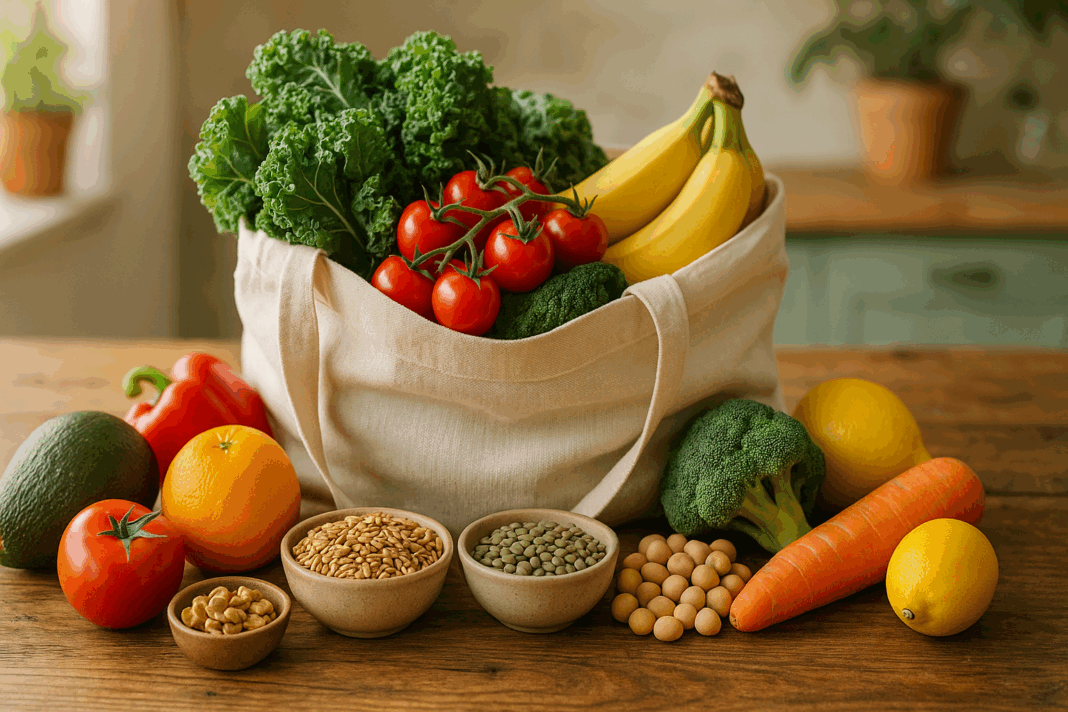Embracing a Plant-Based Lifestyle with Purpose and Precision
In an age where chronic diseases are on the rise and environmental concerns loom large, more individuals are seeking sustainable, health-conscious dietary alternatives. A well-planned vegan or vegetarian diet, particularly one centered around whole foods, offers not only a pathway to improved personal health but also a compassionate and environmentally sound way of living. However, for many beginners and even seasoned plant-based eaters, creating a strategic, nutritionally complete grocery list can feel overwhelming. This is where a comprehensive, science-backed plant based grocery shopping list becomes an indispensable tool.
At its core, the whole food plant-based (WFPB) diet prioritizes minimally processed foods derived entirely from plants. It excludes animal products and refined ingredients, emphasizing fruits, vegetables, whole grains, legumes, nuts, and seeds. Such a diet has been linked to lower risks of heart disease, type 2 diabetes, hypertension, and some cancers, making it a compelling choice for those who aim to optimize their health through nutrition. A detailed vegan grocery shopping list grounded in science ensures nutritional adequacy and variety, supporting long-term success on a plant-based path.
Whether you’re embarking on Veganuary, transitioning to a vegetarian lifestyle, or fine-tuning your plant-based journey, having a reliable shopping list for vegan or vegetarian eating is not only practical but empowering. This article serves as a trusted companion in your transition, offering evidence-based insights and practical guidance to help you curate a nourishing, complete, and cost-effective grocery list tailored to your needs.
You may also like: Smart Strategies for Plant-Based Eating on a Budget: How to Nourish Your Body Without Overspending
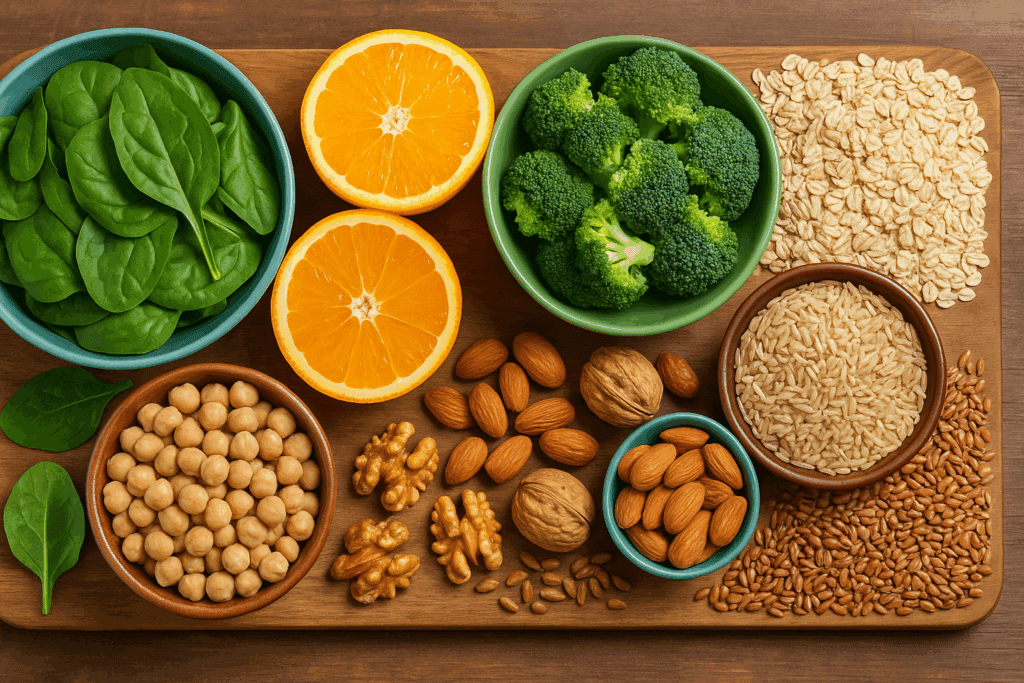
The Science Behind a Well-Rounded Plant-Based Diet
While plant-based diets can offer exceptional health benefits, they require thoughtful planning to avoid nutritional deficiencies. Research published in leading journals such as The American Journal of Clinical Nutrition emphasizes the importance of including diverse food groups to meet key nutrient requirements such as vitamin B12, iron, calcium, and omega-3 fatty acids. A carefully curated vegan diet shopping list can help bridge these nutritional gaps by including fortified foods and a wide variety of whole plant ingredients.
One of the most compelling reasons for adopting a plant-based approach is the overwhelming evidence linking it to reduced chronic disease risk. The EPIC-Oxford study, one of the largest of its kind, found that vegetarians and vegans tend to have lower body mass indices (BMIs), blood pressure, and cholesterol levels compared to meat-eaters. In this context, a strategic vegetarian food shopping list can function as a preventive healthcare tool, shaping daily habits that align with long-term wellness goals.
Understanding the foundational elements of a plant based food grocery list is critical. Fruits and vegetables provide antioxidants and phytonutrients that combat oxidative stress. Whole grains supply fiber and essential B vitamins. Legumes are rich in protein and iron, while nuts and seeds contribute healthy fats, zinc, and magnesium. These food groups form the backbone of a whole food plant based list, making them essential staples in your shopping routine.
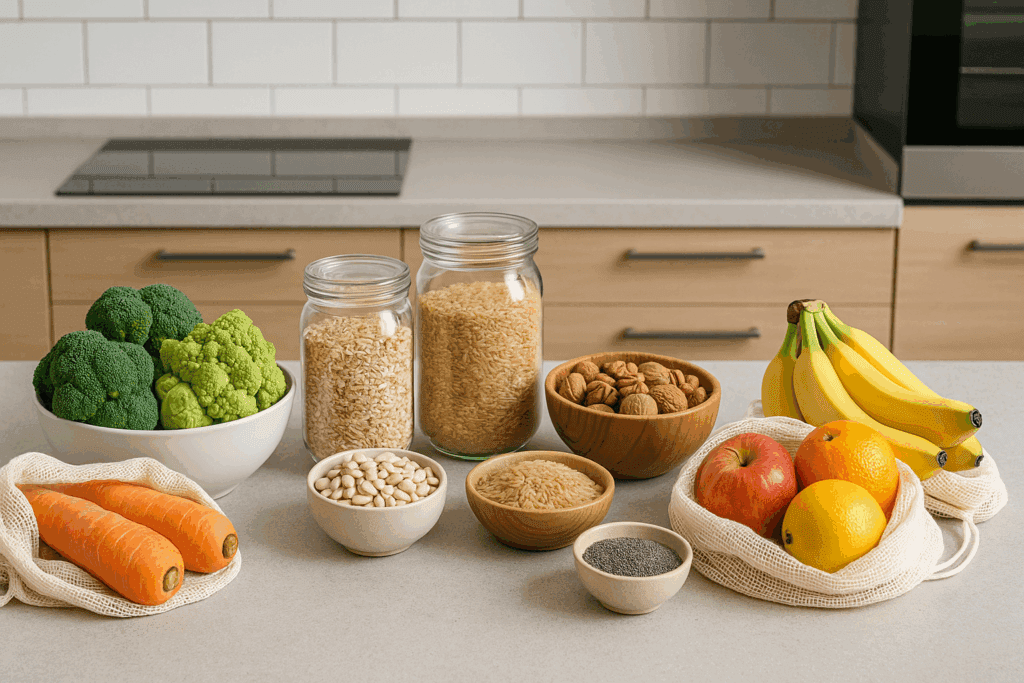
Key Components of a Balanced Vegan Grocery Shopping List
When constructing a vegan food list for beginners or experienced individuals, the aim should be to achieve diversity, density, and digestibility. Diversity ensures a wide range of nutrients and flavors. Nutrient density means prioritizing foods that deliver the most vitamins and minerals per calorie. Digestibility refers to how well your body can absorb and use the nutrients provided. Each of these components plays a vital role in shaping a grocery list for a plant based diet that truly supports health.
Vegetables should occupy a significant portion of your cart. Leafy greens like kale, spinach, and Swiss chard are high in calcium and iron, while cruciferous vegetables like broccoli and Brussels sprouts offer cancer-fighting compounds. Root vegetables such as sweet potatoes and carrots provide fiber and beta carotene, a precursor to vitamin A. These form a foundational part of any whole food plant based diet grocery list.
Whole grains deserve equal emphasis. From brown rice and quinoa to oats and barley, these grains supply sustained energy, B vitamins, and fiber to support digestive health and metabolic function. Including a variety of whole grains in your plant based shopping list enhances satiety and provides essential fuel for physical activity and mental clarity.
No vegan grocery shopping list would be complete without a robust selection of legumes. Beans, lentils, chickpeas, and peas are nutritional powerhouses, offering protein, iron, and complex carbohydrates. They’re also versatile in recipes, from hearty stews and curries to hummus and plant-based burgers. For those seeking to build a protein-rich vegan diet grocery list, legumes are indispensable.
Nuts and seeds, though small, pack a mighty punch. Almonds, walnuts, flaxseeds, chia seeds, and hemp seeds provide healthy fats, omega-3s, and protein. They also play a critical role in hormone regulation and brain function. Including these in your vegan foods grocery list helps ensure that you meet your body’s need for essential fatty acids and trace minerals.
Fruits bring not only sweetness and flavor but also a host of vitamins, antioxidants, and hydration. Berries, apples, bananas, oranges, and seasonal produce are all excellent additions to a beginner vegan grocery list. Variety is key here, as each fruit offers a unique nutrient profile that supports immune function, skin health, and energy metabolism.
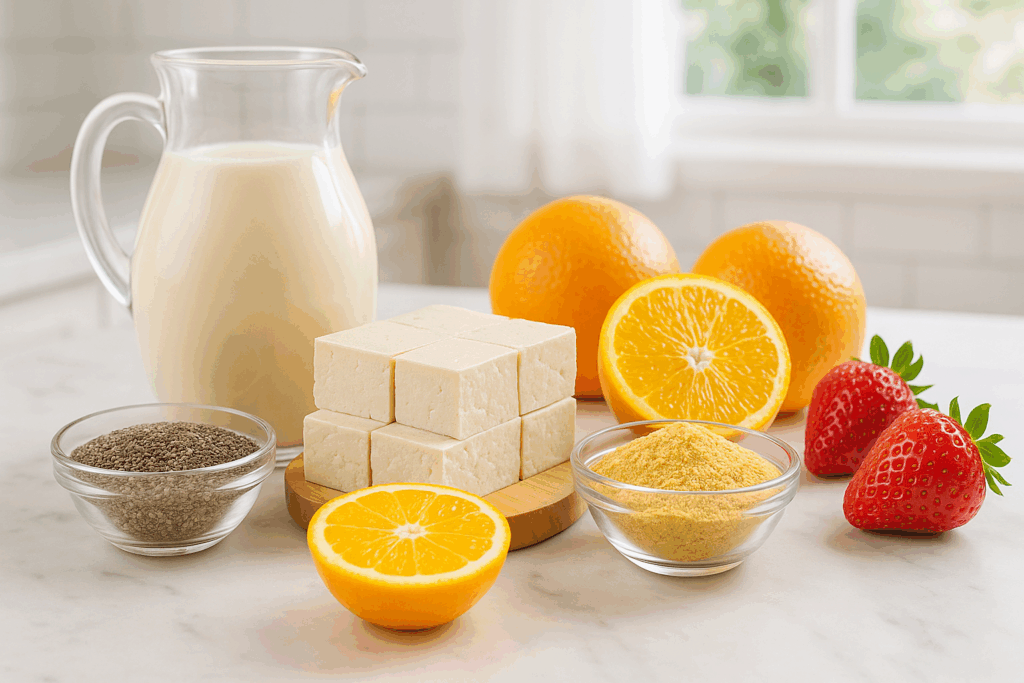
Essential Fortified Foods and Supplement Considerations
While a well-designed plant based diet shopping list can fulfill most nutrient needs, some nutrients are more difficult to obtain from whole plant foods alone. Vitamin B12 is the most notable example. This vitamin is crucial for neurological health and red blood cell production, yet it is not naturally found in plant foods. Including fortified plant milks, cereals, and nutritional yeast in your veganism food list can help ensure adequate intake. For some, a B12 supplement may also be necessary.
Calcium, typically associated with dairy, is available through plant-based sources such as fortified almond milk, tofu processed with calcium sulfate, and dark leafy greens. When building a whole food plant based shopping list, selecting fortified products that complement naturally calcium-rich plants can help maintain strong bones and teeth without relying on animal products.
Omega-3 fatty acids, essential for heart and brain health, are predominantly found in fatty fish. However, plant-based sources such as flaxseeds, chia seeds, walnuts, and hemp seeds provide alpha-linolenic acid (ALA), which the body can convert into usable omega-3s, albeit less efficiently. Including these in your plant based food shopping list supports cardiovascular well-being.
Iron is another nutrient of concern in plant-based diets. While legumes, tofu, quinoa, and leafy greens are excellent iron sources, the non-heme iron in plants is less readily absorbed than the heme iron found in animal products. Consuming these iron-rich foods alongside vitamin C-rich fruits like oranges, strawberries, and bell peppers enhances absorption. This pairing should be a deliberate component of any thoughtfully designed vegan diet shopping list.
Zinc and iodine are additional trace minerals that warrant attention. Whole grains, nuts, and legumes offer zinc, but absorption can be limited by phytates. Iodized salt and sea vegetables like nori and kelp are helpful additions to your food shopping list for vegans to ensure thyroid health and hormonal balance. As with all nutrients, balance and variety remain the guiding principles in effective plant-based grocery planning.

Planning for Practicality: Making Your Plant-Based Grocery List Work for You
A plant-based lifestyle isn’t just about what you eat—it’s also about how you plan. Transforming an ideal vegan grocery shopping list into a weekly routine involves intentional decision-making, time management, and adaptability. This is especially true when managing a budget or juggling a busy schedule. A plant based diet grocery list on a budget is entirely achievable with a strategic approach to shopping, seasonal awareness, and mindful consumption. When executed effectively, it becomes the cornerstone of both health and sustainability.
Seasonality is one of the most powerful tools for stretching your grocery dollars while enhancing nutrition. Fruits and vegetables that are in season tend to be more affordable, fresher, and more flavorful. For example, incorporating winter squashes and citrus fruits during colder months, or leafy greens and berries in spring and summer, not only diversifies your meals but also makes your plant based shopping list more cost-effective. Farmer’s markets, local co-ops, and community-supported agriculture (CSA) programs are excellent sources for seasonal, budget-friendly produce.
Bulk shopping is another strategy that supports both financial and nutritional goals. Whole grains, legumes, nuts, seeds, and dried fruits often come at lower prices per unit when purchased in bulk. These pantry staples have long shelf lives and provide a strong nutritional foundation for any grocery list for a plant based diet. Cooking in batches and storing meals for later use can further reduce costs and help minimize food waste, which is a critical consideration for anyone committed to a sustainable, whole food plant based lifestyle.
Prioritizing versatility in your ingredients also ensures maximum utility. For instance, buying chickpeas allows for the preparation of hummus, stews, salads, and even plant-based burgers. Likewise, oats can be used in breakfast porridges, baked goods, or savory grain bowls. When selecting items for your vegan food list, consider how many ways you can incorporate each food into your weekly meal plan. This reduces the likelihood of unused perishables and fosters culinary creativity.
Time management plays an equally vital role. Setting aside an hour each week to plan meals, check pantry inventory, and make a thoughtful shopping list can lead to better health outcomes and less mealtime stress. Keeping a flexible framework for meals based on your plant based diet grocery shopping list makes it easier to substitute ingredients and adapt to what’s available, which is particularly useful during supply chain disruptions or when shopping in smaller stores.
Specialty Items and Indulgences: Balancing Enjoyment with Nutritional Goals
While the foundation of a whole food plant based grocery list lies in unprocessed, nutrient-dense ingredients, there’s also room for enjoyment and exploration. Many people new to the lifestyle wonder if there’s space for plant-based cheeses, vegan meats, and desserts in their shopping cart. The answer lies in moderation, informed choices, and understanding how these items fit within the broader nutritional picture.
Plant-based alternatives such as meat substitutes, dairy-free yogurts, and vegan ice creams have grown significantly in quality and accessibility. These items can be helpful for those transitioning to a vegan lifestyle or seeking comfort foods without animal products. When integrated mindfully into your veganism food list, they can make the transition more sustainable and enjoyable. However, it’s important to read labels carefully, prioritizing products low in saturated fats, added sugars, and sodium.
From a nutritional standpoint, these products are often more processed than whole plant foods and may not offer the same density of micronutrients. That said, occasional inclusion can still align with a healthy eating pattern when the bulk of your plant based food shopping list consists of whole ingredients. Choosing higher-quality products made with legumes, whole grains, or nuts as their base—rather than refined oils or starches—adds value while satisfying cravings.
It’s also worth considering the cultural and emotional aspects of food. Sharing a plant-based pizza with friends, enjoying a plant-based version of a childhood favorite dish, or indulging in a decadent dessert can all contribute to mental and emotional well-being. These experiences foster a sense of belonging and enjoyment that is just as important as meeting daily nutrient requirements. Balancing these treats within your shopping list for vegan or vegetarian eating supports long-term adherence and holistic health.
Many brands now offer fortified versions of plant-based specialty foods that include B12, iron, or calcium. Including these in your grocery shopping list for vegans can help cover nutrient gaps while expanding your culinary repertoire. Just as you wouldn’t rely solely on dessert for nutrition, these items should complement, not replace, the whole food staples in your vegan diet grocery list.
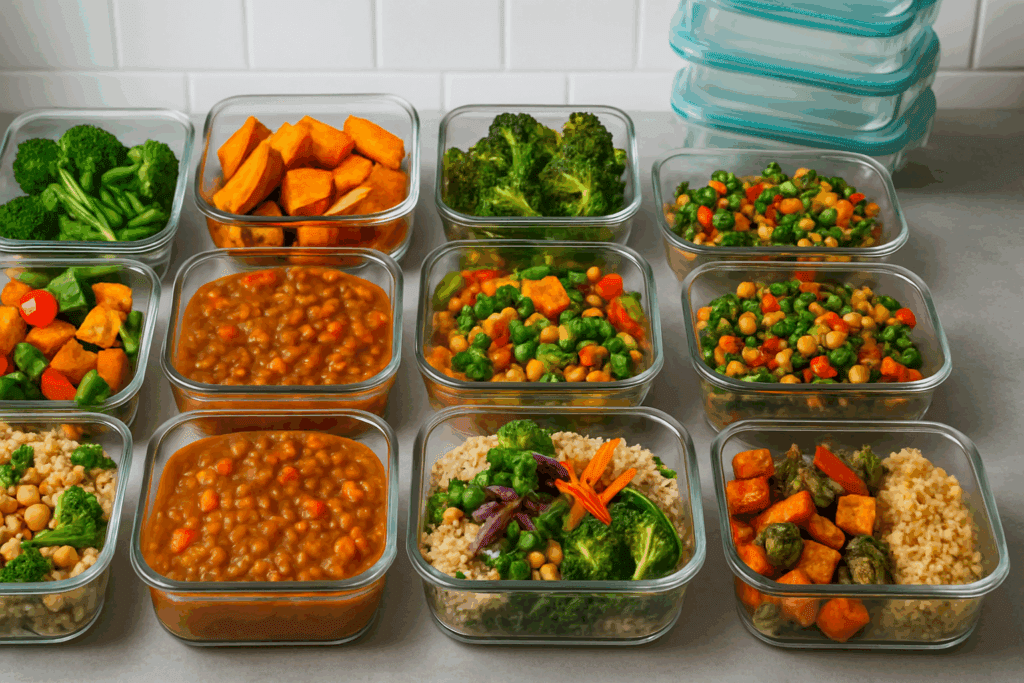
Meal Planning and Batch Cooking for Efficiency and Nutrient Density
One of the biggest challenges people face when transitioning to a whole food plant based diet is the daily question of “What am I going to eat?” Without a plan, even the most thoughtfully created vegan food list can go underutilized. Meal planning bridges the gap between intention and action, helping you make the most of your plant based grocery shopping list while avoiding food waste and nutrient imbalances.
A successful plant-based meal plan begins with identifying your nutritional needs and favorite dishes, then aligning those preferences with your grocery list. For example, if you enjoy Mexican cuisine, stocking black beans, avocado, corn, salsa ingredients, and whole grain tortillas gives you the building blocks for several meals. Those crafting a vegan food list for beginners should focus on versatile meal templates like stir-fries, soups, salads, and grain bowls, which can be customized based on what’s available or in season.
Batch cooking is another powerful strategy for those managing time constraints. Preparing a pot of lentil stew, a tray of roasted vegetables, or a batch of quinoa at the beginning of the week provides ready-to-eat components that can be mixed and matched. This approach supports consistency, reduces decision fatigue, and makes it easier to stick to your whole food plant based diet shopping list over time. It also encourages mindful eating by reducing the temptation to opt for less healthy convenience foods when hunger strikes.
When planning meals, it’s important to ensure a balance of macronutrients and micronutrients. Each dish should ideally contain a source of protein (such as legumes or tofu), a complex carbohydrate (like whole grains), healthy fats (from nuts, seeds, or avocados), and an abundance of colorful vegetables. This balance can be easily achieved by cross-referencing your weekly meal plan with your plant based diet grocery shopping list.
Meal prepping also allows for better portion control and reduced stress. When meals are prepped in advance, individuals are less likely to skip meals or make impulsive food choices. Keeping storage containers labeled and organized by meal can turn your refrigerator into a personalized plant-based meal kit. With practice, this routine not only saves time but reinforces your commitment to a nutritious and sustainable lifestyle.
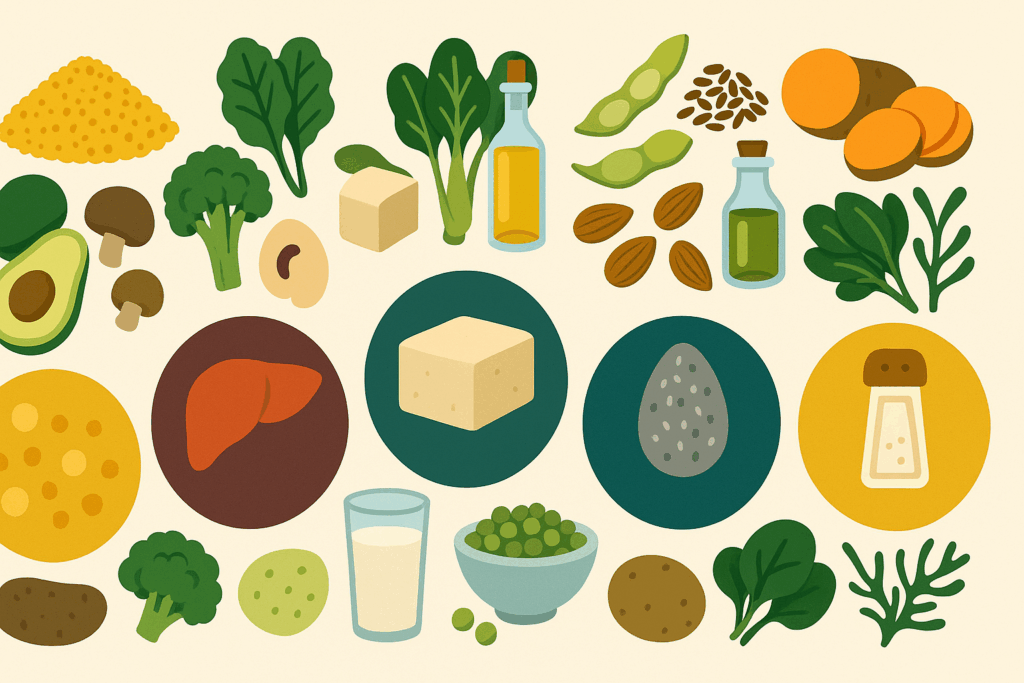
Navigating Grocery Stores and Food Labels with Confidence
Understanding how to navigate grocery store aisles and read food labels is crucial for making informed choices. While compiling a vegetarian food shopping list or a vegan foods grocery list is one thing, the execution depends heavily on your ability to distinguish between marketing and meaningful nutrition. With the surge in plant-based products, not all options are created equal.
Begin by prioritizing the outer perimeter of most grocery stores, where fresh produce, bulk bins, and minimally processed foods are typically located. These sections offer the core items for your whole food plant based list, including leafy greens, whole grains, fruits, and legumes. Center aisles, which often house more processed foods, can still be navigated wisely by focusing on canned beans, jarred sauces with low sodium, and whole grain pasta options.
Food labels are your guide to ensuring that what goes into your cart aligns with your health goals. Ingredients should be recognizable and as short as possible. Look for terms like “whole grain,” “no added sugars,” “low sodium,” and “fortified with B12 or calcium.” Beware of misleading buzzwords like “natural” or “plant-based,” which are not regulated terms and can sometimes appear on highly processed items. Cross-referencing these insights with your plant based diet grocery shopping list empowers you to make smarter choices.
Pay attention to serving sizes, which can often be misleading. A product may appear low in calories or sugar until you realize that the listed serving size is unusually small. Understanding these nuances helps you build a vegan grocery shopping list that reflects reality rather than just marketing claims. Consider the nutritional density and practicality of every product you purchase.
For those navigating food allergies or intolerances, label reading becomes even more critical. Many plant-based foods are naturally gluten-free, soy-free, or nut-free, but cross-contamination is possible. Seek certifications and third-party verifications when available, and always double-check ingredients. This diligence ensures that your grocery list for a plant based diet supports not only your ethical and nutritional goals but also your unique health needs.
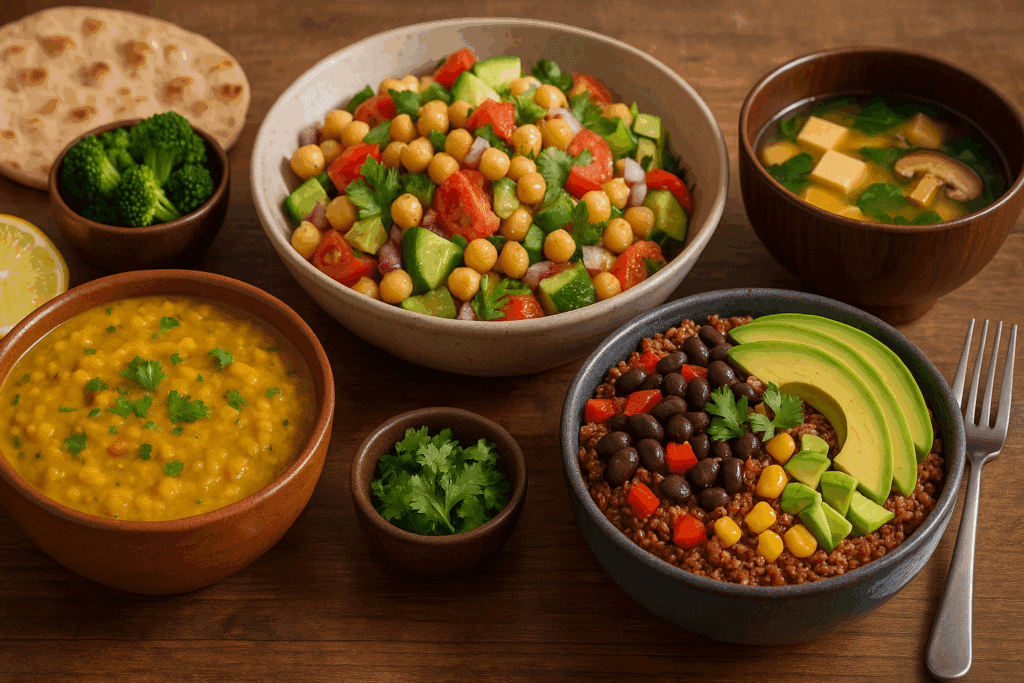
Incorporating Plant-Based Variety for Nutritional and Culinary Balance
One of the key strengths of a comprehensive plant based grocery shopping list lies in its potential to bring culinary diversity and robust nutrition into everyday life. Eating the same few meals on repeat not only limits nutrient exposure but can also lead to taste fatigue, making it harder to maintain dietary consistency. Introducing new ingredients and exploring global cuisines can revitalize your meal planning and help you derive more joy and nourishment from food. With each addition to your vegan food list, you expand your capacity to meet your health goals through exciting flavors and unfamiliar ingredients.
Exploring different world cuisines is one of the best ways to bring variety to your veganism food list. Mediterranean diets emphasize olive oil, chickpeas, lentils, and fresh vegetables. Indian cuisine is rich in lentils, spices, and plant-based curries. East Asian traditions incorporate tofu, rice, seaweed, and miso. Latin American dishes make use of corn, beans, avocados, and tropical fruits. By learning to prepare dishes from different cultures, you not only expand your culinary repertoire but also naturally create a more diverse and complete plant based food shopping list.
In addition to expanding global influences, it’s beneficial to rotate ingredients regularly. Instead of using spinach in every meal, try swapping in arugula, bok choy, or collard greens. Trade quinoa for bulgur or millet, or alternate between black beans, red lentils, and mung beans. This rotation helps reduce the risk of developing food sensitivities and increases the breadth of nutrients you consume. Such practices make your whole food plant based grocery list more dynamic and better suited to long-term health.
Fermented foods are another valuable addition to your plant based diet shopping list. Sauerkraut, kimchi, miso, and tempeh offer probiotics that support gut health and improve digestion. These foods also contribute to stronger immune function and may even improve mood regulation due to the gut-brain axis. Including a variety of fermented items in your vegan diet shopping list helps round out the microbiome-supportive aspects of your dietary plan.
Herbs, spices, and condiments deserve their own place in the spotlight. Beyond flavor enhancement, many herbs and spices offer anti-inflammatory, antioxidant, and antimicrobial properties. Turmeric, garlic, ginger, cumin, oregano, and basil are all examples of nutrient-rich additions to your grocery shopping list for vegans. They not only enhance taste but also elevate the health-promoting potential of your meals, adding complexity and character to each bite.
Frequently Asked Questions: Optimizing Your Plant-Based Grocery Strategy
1. How can I make my plant-based grocery list more efficient without sacrificing variety or nutrition?
One way to enhance the efficiency of your plant based grocery shopping list is by organizing it by food function and storage life. Think in terms of ingredients that serve multiple purposes—like lentils for soups, stews, and salads—and buy staple items in bulk that will last several weeks, such as oats, quinoa, or dried beans. While a whole food plant based list should emphasize fresh produce, incorporating frozen fruits and vegetables can add both convenience and reduce spoilage. Shopping strategically, such as planning your meals around a rotating set of nutrient-dense bases, like brown rice or whole wheat pasta, allows for flexibility in flavors while keeping your grocery bill predictable. When you approach your grocery list for a plant based diet with this mindset, you’ll find that variety and simplicity are not mutually exclusive.
2. What are some common mistakes to avoid when building a vegan grocery shopping list?
A frequent misstep is relying too heavily on pre-packaged or overly processed items marketed as “plant-based.” While convenient, these can undermine your goals if they dominate your vegan diet shopping list. It’s also common to forget about key nutrients like vitamin B12 or iodine when crafting a beginner vegan grocery list, which can lead to deficiencies over time. A well-rounded veganism food list should include both fortified foods and naturally nutrient-dense choices like legumes and greens. Another pitfall is neglecting to assess your kitchen inventory before shopping, which leads to unnecessary purchases and food waste. Aligning your vegan food list with your current stock ensures smarter, more sustainable habits.
3. How do I adapt a plant based diet grocery list on a budget without compromising on quality?
Affordability and nutrition can absolutely go hand in hand. When working with a plant based diet grocery list on a budget, choose bulk bins for items like brown rice, lentils, and rolled oats. Buying in-season produce, especially from farmers markets or discount grocers, reduces cost while supporting local food systems. Your plant based food shopping list can also prioritize versatile, high-protein staples such as tofu, black beans, and canned tomatoes that are low-cost but nutrient-rich. Cooking in batches and freezing leftovers extends your meals and reduces impulse spending. Ultimately, a thoughtful, budget-conscious plant based food grocery list supports your financial goals without sacrificing health or variety.
4. How can I personalize my vegan food list for beginners if I have allergies or intolerances?
Crafting a vegan food list for beginners with food sensitivities requires careful label reading and a focus on hypoallergenic staples. For instance, those with nut allergies might prioritize seeds like hemp or pumpkin for healthy fats and protein. Gluten-free individuals can tailor their plant based grocery shopping list to include whole grains like buckwheat, millet, or amaranth. Dairy alternatives made from oats or rice instead of nuts are ideal for those with multiple intolerances. Being intentional with your vegan grocery shopping list not only keeps you safe but can also expand your culinary creativity through lesser-known ingredients.
5. What are some underrated items I should include in a whole food plant based diet grocery list?
Many people overlook fermented foods when creating their whole food plant based diet grocery list, but items like tempeh, sauerkraut, and miso provide beneficial probiotics for gut health. Sea vegetables such as nori or dulse flakes offer iodine, an essential nutrient often missing in a plant based diet shopping list. Sprouted grains and legumes are other powerful additions to your plant based shopping list, enhancing nutrient absorption and digestibility. Incorporating fresh herbs, tahini, and citrus can also elevate your meals while delivering key vitamins and minerals. These lesser-known staples enrich the nutritional diversity of your whole food plant based shopping list and support optimal health.
6. Is a veganuary shopping list different from a year-round vegan food list?
While a veganuary shopping list can be more introductory and geared toward quick-start transitions, it should still emphasize foundational whole foods. During Veganuary, many individuals lean on convenience items, but transitioning from a beginner vegan grocery list to a sustainable lifestyle involves gradually replacing those with home-cooked meals based on whole ingredients. Including versatile ingredients like chickpeas, brown rice, and spinach helps bridge that gap. Your veganuary shopping list should also be a platform for learning—experiment with spices, try different legumes, and learn basic plant-based cooking techniques. This approach transforms a temporary vegan foods grocery list into a long-term lifestyle guide.
7. How can I maintain balance in my vegan diet grocery list while managing fitness or athletic goals?
If you’re physically active, your vegan diet grocery list should include ample plant proteins and energy-dense foods. Prioritize high-protein items like lentils, chickpeas, tempeh, and edamame, and pair them with complex carbs such as sweet potatoes and farro for sustained energy. Nut butters, chia seeds, and fortified plant milks support recovery and muscle maintenance. For athletes, electrolyte balance is important, so adding items like coconut water and bananas to your food shopping list for vegans can help restore hydration. Planning meals around your training schedule and customizing your vegan food list ensures your performance and recovery remain optimal.
8. What role does food storage play in making the most of my whole food plant based grocery list?
Proper storage is essential for extending freshness and reducing waste. Organizing your refrigerator by food group and date can help prioritize what to use first. Investing in airtight containers for grains, nuts, and legumes can preserve them for months, making your wfpb grocery list more functional long-term. Freezing chopped herbs, sauces, or pre-cooked grains in small portions supports quick meal prep and reduces the temptation to rely on convenience foods. Your plant based grocery list should take into account how well items keep over time, helping you make informed decisions that align with your lifestyle.
9. How can I prepare a plant based grocery list for traveling or living in a food desert?
If you’re dealing with limited access to fresh produce, your plant based diet grocery shopping list should include shelf-stable, nutrient-dense items like canned beans, dried fruits, and shelf-stable plant milks. Whole grain wraps, nut butters, and snackable vegetables like carrots and snap peas can travel well and provide energy on the go. In food deserts, partnering with local community-supported agriculture (CSA) programs or mobile produce delivery services may offer alternative sources for fresh ingredients. Your veganism food list can be adapted to focus on resilient staples like rice, oats, and lentils that don’t require refrigeration. Flexibility and foresight are key when tailoring your grocery shopping list for vegans in such contexts.
10. How can I keep my plant based food grocery list exciting and sustainable over time?
Avoiding repetition is critical for long-term success. Each month, choose a new recipe or cuisine to explore and adjust your plant based grocery shopping list accordingly. Joining plant-based cooking communities or using seasonal produce guides can inspire fresh meal ideas. If you find yourself stuck in a routine, consider switching up your protein sources or experimenting with new herbs and spices. Incorporating these techniques ensures your whole food plant based food list continues to evolve, helping you stay engaged and motivated. Sustainability in this context means not just environmental impact, but also your ability to enjoy and maintain your plant based lifestyle for the long haul.
Conclusion: Building a Lifelong Foundation with Your Whole Food Plant-Based Shopping List
Adopting a plant-based lifestyle is more than a diet—it is a commitment to conscious living that supports your health, the environment, and animal welfare. At the center of this commitment lies a practical tool that makes your intentions tangible: the whole food plant based diet grocery list. When thoughtfully constructed and used with purpose, it becomes the bridge between aspiration and action, guiding your daily choices with confidence and clarity.
The journey toward health through plant-based eating is a dynamic and evolving process. With a reliable vegan grocery shopping list in hand, you are better equipped to maintain nutritional balance, experiment with new recipes, and adapt to seasonal and personal needs. Whether you are preparing for Veganuary, transitioning to a fully plant-based lifestyle, or simply exploring how to make your vegetarian food shopping list more nutrient-dense, this approach gives structure and stability to your efforts.
From batch cooking strategies and ingredient versatility to label literacy and culinary variety, the tools and insights shared in this guide are grounded in the principles of whole-food, plant-based nutrition. A plant based diet grocery list on a budget is not only possible—it is a realistic and fulfilling strategy for anyone seeking vibrant health and sustainability without financial strain.
As you continue to refine your vegan food list for beginners or upgrade your existing grocery habits, remember that the goal is not perfection, but progress. Every nourishing choice adds up, and each trip to the store becomes a chance to reinforce your values and invest in your well-being. By incorporating the full range of ingredients and principles discussed here, your plant based grocery shopping list evolves into more than just a checklist—it becomes a catalyst for lasting transformation.
Ultimately, your plant-based journey is uniquely yours, but it is enriched by science, supported by community, and sustained through intention. Let your next trip to the store be a celebration of health, compassion, and culinary possibility. Armed with knowledge and purpose, your cart can become a powerful tool for change—one whole food at a time.
Further Reading:
Ultimate Whole Food Plant-Based Grocery List
A Plant-Based Diet Guide: Benefits, Food List, and How to Start

